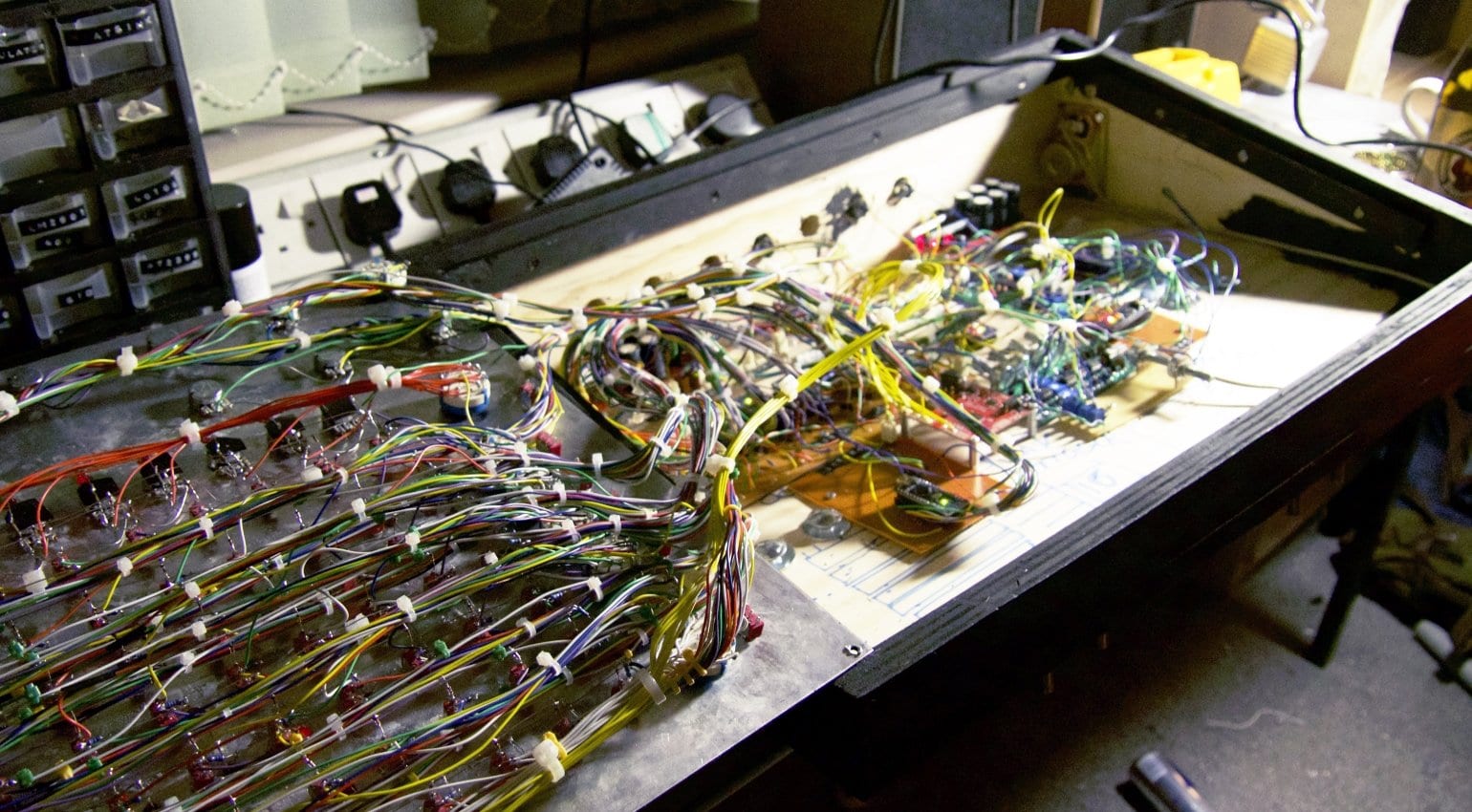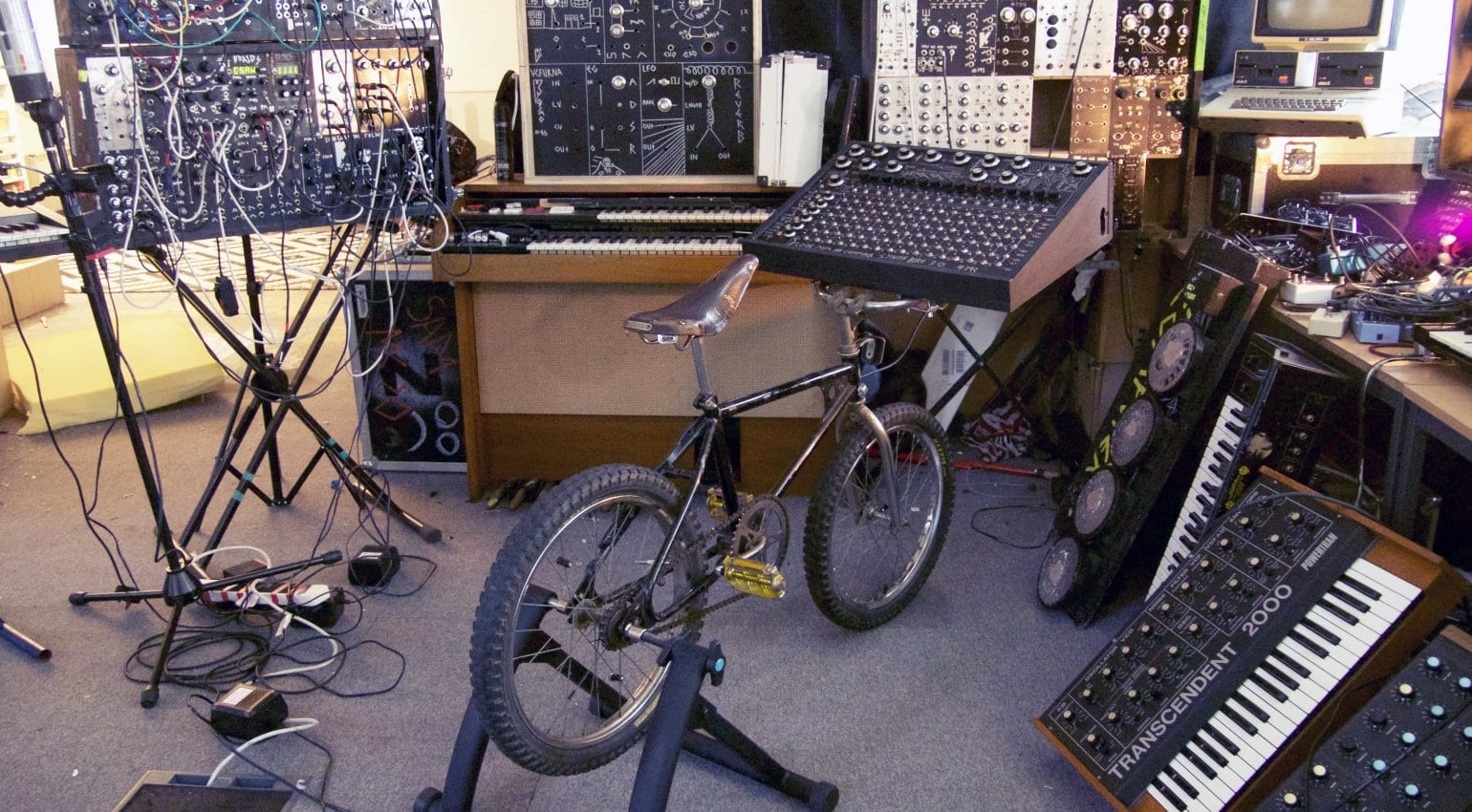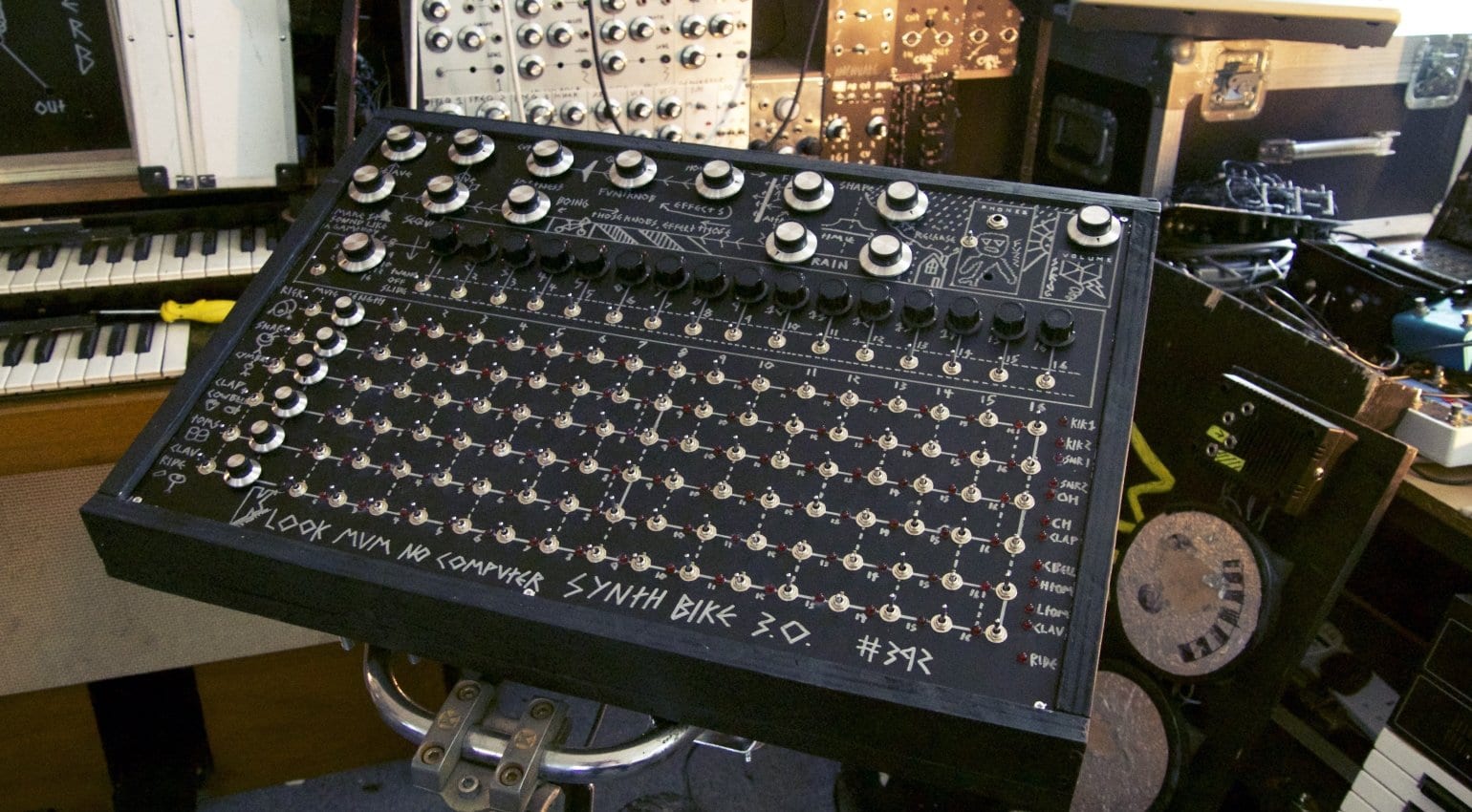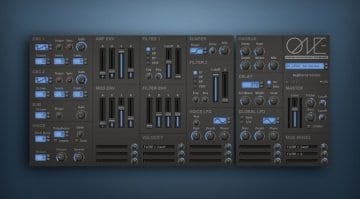Look Mum No Computer interview: Just keep going ’till its done!
Look Mum No Computer is a YouTube channel ran by UK-based musician and self-taught Gyro Gearloose, Sam Battle. Every hardcore synthesizer maniac is subscribed to it, or if they aren’t, they quickly do after witnessing Sam’s exploits. Half-modular synth freak, half-inventor, Sam is prolific and his creations never fail to entertain. One of his recent projects is SynthBike 3.0, a Dublin Science Gallery showpiece that combines a traditional bike with a non-traditional synth. Capable of phat 808 drums and squelchy acid basslines, it’s the ultimate bike horn for ravers! Another of his recent vids shows how he hacks together 2HP Freez modules…
We really wanted a glimpse of what’s going on inside Sam’s head, so we asked him a few questions a safe distance away from his secret laboratory. Behold, the unabashed Look Mum No Computer interview!
Tell us mortals about your background as an inventor and all-out synthesizer maniac.
When I was younger, I used to take everything apart, all home appliances were on lock-down in case I took them apart and inevitably broke them! That’s kinda where I’m guessing it came from, because I didn’t go to uni to do electronics or whatever. I only managed half a degree in music tech before packing it in and moving to London as a guitarist. I started getting bored of guitars and found the wonders of circuit bending… which just kept on growing, from Elmo and furbies to big gameboy synth machines.
The first actual synth machine I built, I kinda jumped in the deep end. I really wanted a Korg MS 20! So I made a synth that “sort of” resembled it, which took forever. It definitely died a long while ago from spaghetti junction syndrome.

The dreaded spaghetti junction syndrome, killer of home-made synth clones! · Source: https://goo.gl/hDSsHG
SynthBike is brilliant! How bored were you with regular non-moving synthesizers to come up with such a concept?
This last year has been quite the year for coming up with stupid invention concepts. I was always interested in mixing together two things that shouldn’t be mixed together – it’s always funny, and you have a better chance at setting apart from other machines out there. Looking back, it was bound to happen. I’ve always ridden bikes, and when I was younger I got a Raleigh Urban Wolf handed down the family to me. Which is kinda like a synth bike for kids!
Can you give us a mini-tour of the inside of the synth part of SynthBike? We know about the 12 (!) Arduinos, but what about your take on the drum machine and Roland TB-303 circuits?
The insides of Synth bike 3.0 have not been super thought out, as I had to design and build it in the space of a week. It’s for a gallery – you are free to go ride it now if you are ever in Dublin, it’s at the science gallery.
So I have a folder of Arduino codes I re-use in a lot of my designs. Some code by me, some code I’ve found on the internet and forums. The reason I have so many Arduinos is because it seemed easier to have each Arduino doing a set job, rather than spend hours writing new code. This is a run-down for people who are interested!
– Arduino 1, 16-step sequencer for the Bass synth. It’s 16 steps which have switches to choose between trigger and slide, hence the 303-style bass lines you can get – it slides like a 303.
– This goes into a Frequency central Trans Europa PCB, which quantises the voltages from the sequencer to definite notes, and also controls the slide! This is turned on and off by the sequencer.
– This then powers 2 VCOs. One is just a strip board VCO of a go-to design I have in my notes. The other VCO is a wavetable oscillator, all on a single Arduino! Code is for the Ginkosynthese Grains, it’s amazing!
– This goes into the Frequency Central Rogue VCF/VCA, which can be built to replicate a MOOG rogue filter, or a 303 filter, so I built it to replicate the 303 filter.
– This then goes into a couple of effects strip boards, and to the output!
– Oh! The Envelope generators (2 of them) are also Arduinos! Code is over at 20objects.com. I like it because it’s literally just an Arduino and 10 resistors, and it’s just as plucky as any analog Envelope generator!
– Drums! There are 6 separate 16-step sequencers. These are the same Arduino code as the bass line sequencer, however it has been wired to switches instead of knobs!
-Each of the 6 sequencers have 3-way switches. Up is one sound, Center is off, and Down is another sound. So all in all, you are controlling 12 sounds!
-This runs into a SparkFun Wav Trigger, which is extremely useful for samples. I have 3 or 4 of them in my synth for certain sounds. Just pop the sounds on the SD card and you are away!
– The back wheel is basically just a magnet, and a Reed switch (which turns on when the magnet goes past it) from a cycle speed thing that goes on your handle bars. Every time the magnets go past the switch, the whole synth advances 1 step. It’s cool, because you can put the magnets on different spokes and change the swing of the song!
Has any big company or musician approached you for collaborating? We’re thinking Rammstein’s keyboard player, who spends half the show pacing a treadmill might be interested…
Haha Rammstein, that would be sick! But sadly that collab hasn’t happened yet. I get the odd email every once in a while, yeah. I’m working on a group of videos for one company at the minute, which are pretty grandiose. Also, I’m shooting a few videos for synth module companies, showing off what their synth modules can do. Look Mum No Computer has been going for just under a year, so I’m still waiting for them to take me seriously, I guess… if you can ever take a guy like me seriously.
You seem to have the ability to turn anything into a synth controller. What’s the secret to your superpower?
Ermm. When I look at a problem, I go: “How the hell am i suppose to do this?!” Then you keep at it and suddenly, you’ve made it work. You look back and go “WOAH – how the heck did I do that?!” Its a lot of stumbling in the dark, but also a lot of common sense. There’s a hell of a lot of resources on the internet. Its about taking whatever knowledge you have and filling in the blanks with bits of internet knowledge. I like to think electronics, especially hacking pieces of equipment into other things, as dot to dot. If you keep following lines on the PCB around, draw it out sometimes, you start working out what is happening.
Thats how i started working this stuff out. First thing was a USB midi controller. I had no idea how any of this stuff worked. I wanted to turn it into a foot pedal to trigger backing track stuff. After spending a few days just staring at the PCB boards and working out that each key didn’t actually all go to separate pins, I started working it out, and I was able to solve the problem. I’m miles off from understanding most stuff. You just keep going ’till its done, whatever it is! The other thing to keep in mind is all of this stuff has been designed with human brains, like yours and mine. If they can do it, we can too!
Do you plan using SynthBike tech to create the raddest bike horn the world has ever seen? And when’s the SynthCar coming up?
Been thinking about it a lot! One day, if anyone wants to help, please send me an email! Right now, I’m working on my first EP for Look Mum No Computer, along with other videos. I really wanna get some products made, be that little synths for bikes, or synth modules from designs I have sitting around!
As for synth car… I found one of those kids sit-in cars in a skip the other day, so watch this space – as that might be a synth sometime soon!
Thanks for answering these and we hope you got to have some fun. Cheers!
Thanks for asking these! Indeed, it was fun. Take care!










